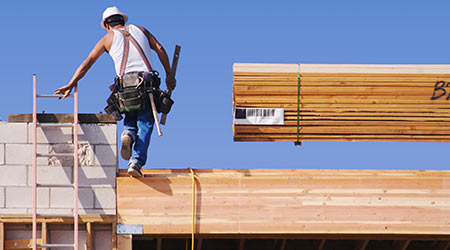
Proper Installation Is Crucial for Single-Ply Roof
February 28, 2017
A good design alone can’t ensure a good roof. Attention must be paid to the way the roof is installed.
• Be sure that the metal termination is properly fastened using fasteners appropriate to the substrate and sufficient to resist the wind. Do not allow contractors to tightly butt the termination bars or to cross expansion joints with a solid bar.
• Be sure there are no gaps greater than 1/4-inch between insulation boards. Larger gaps can weaken the membrane from flexing due to thermal movement or foot traffic and can more easily crack.
• Check welded seams to be sure that the welds meet the minimum width required by the manufacturer. Less than minimum can mean that the seam is not strong enough or that any tiny defects in the welds can run through the seam and cause leaks. Especially check the welds at the ends of the seams where the weld changes from a machine made weld to a hand weld. This is the most likely place to find weld defects or missing welds.
• Be sure that the contractor has cleaned the edges of the membrane thoroughly before welding or adhering the seams. Dirt and other contaminants in the area of the seam will assure a seam failure and a leak.
• Require the contractor to put patches at the ends of runs where the seams end in a “T.” Overlapping seams have more chance of having bad welds or lack of adhesion than do straight seams and the patch will change this situation from a T seam to a straight one.
• Probe the seams twice a day during installation to be sure that the seams are tight. Use a rounded tip rather than a pointed one to avoid damaging the membrane.
• Be sure the contractor is installing the specified amount of attachment — regardless of whether the attachment is adhesive or mechanical. This is especially true of foamed urethane adhesives. Because the adhesive will expand, it is sometimes difficult to judge what is the installed amount.
• Access doors and ladders should all have a walk pad installed in front of them to minimize excessive wear on the roof membrane. Have the contractor install walk pads in a direct line from the roof access point to mechanical equipment on the roof.
This quick read is from Karen L. Warseck, AIA, LEED AP, a registered architect and president of Building Diagnostics Associates. Click here for more from Warseck on keys to getting a good single ply roof. And click here for more on the roofing on Facilitiesnet.com.
Next
Read next on FacilitiesNet












